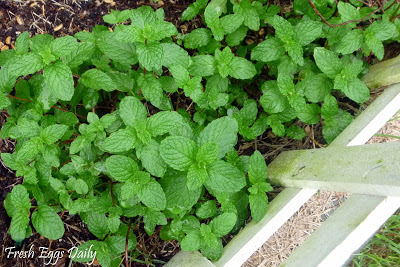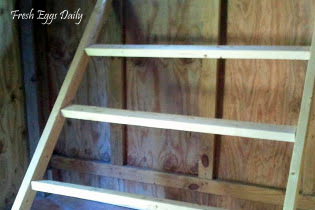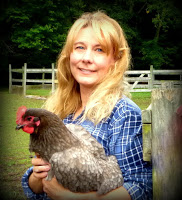
Courtesy Catherine L. Walters/iStock/Thinkstock
6 Pests That Can Wreak Havoc On Your Coop (And How to Banish Them Naturally!)
Watch carefully for signs that mites, ticks and other nuisances are at
work in the coop, and take immediate action to get rid of them for good.
By Audrey Pavia
Although your chickens may be the darlings of your farm, once a pest invasion strikes the coop, nurturing them back to health can be a headache. Chickens are keen at hiding signs of weakness, so you might not notice right away if they’re being attacked by biting lice, mites or flies. It’s important to take careful notice of signs that these poultry pests are at work and take measures to keep them and other chicken threats out of the coop. Here are six of the most common coop pests and natural ways to keep them at bay.1. Ticks
A species of bloodsucking anthropod, Argas persicus, commonly known as the poultry tick or fowl tick, can discretely feed on your chickens. You’ll likely discover these pests by taking a close look at your coop—ticks hide in the crevices of the coop structure and crawl out at night to feed. Although it’s difficult to see ticks on your chickens, you’ll get a clue to the presence of these arachnids when you notice your chickens are reluctant to go inside the coop at night and seem agitated when they try to roost.
Treatment: To minimize the risk of ticks in the coop, caulk the crevices, which is where ticks hide and breed. If ticks have already taken up residence, use a knife to scrape out the ticks from every crevice and hose out the entire coop. Once the coop is dry, you can then fill all crevices with caulk.
2. Mites & Lice
Northern fowl mites (Ornithonyssus sylviarum) and chicken mites (Dermanyssus gallinae) can infest chicken coops, making your birds’ lives miserable. Like poultry ticks, they hide in dark coop crevices during the day and come out to feast on the blood of the chickens at night. They can cause chickens to stop laying eggs and to scratch and over-preen. You can see these tiny insects crawling around if you examine your chickens at night while they’re roosting.
Treatment: If your coop has been infested with mites or lice, scrub out the coop with a 3-to-1 water-to-bleach solution. Scrub coop crevices using a toothbrush, and dust the coop (and your chickens!) with food-grade diatomaceous earth. Give your chickens a tub with fine dirt or dust sprinkled with some of the DE so they can self-treat with therapeutic dust baths. In the case of a severe infestation, a vet may need to prescribe a medication, such as oral ivermectin.
3. Rodents
Mice and rats like to visit chicken coops and help themselves to the food. Lured by chicken feed, scratch and other chicken treats, rodents will leave their droppings behind and contribute to unsanitary conditions in your coop. They might even bring mites along, which can infest your chickens.
Treatment: Rodents are most active at night, so remove scratch and pelleted food in the evening and put it back in the morning. Surround your coop with tight wire mesh, attached to the frame, so mice and rats cannot squeeze through. If you already have chicken wire on your coop, reinforce it by putting the smaller mesh overtop.
4. Flies
House and stable flies are the most common fly pests to invade your coop. Attracted by fresh feces, they can cause terrible damage to chickens with open sores, so chickens that are being bullied and have missing feathers and wounds are most susceptible. Some flies even lay eggs on chicken’s vents if the chicken has diarrhea.
Treatment: It’s easy to keep flies at bay by cleaning your coop regularly and changing the bedding often. Monitor the health of your chickens, and intervene if one or more chickens are being pecked at repeatedly. Watch for chronic diarrhea, and treat with the help of a poultry vet. Practice natural fly control on your property by eliminating damp areas where flies breed, and by using sticky fly traps near the coop.
5. Ants
If you like to give your chickens fresh food, you’ve probably discovered ants in your coop. These busy scavengers are experts at locating fresh produce, no matter where it is. Ants are also drawn to broken eggs, and will swarm a coop not long after an egg breaks. While ants can’t harm a healthy chicken, young chicks or sick or injured birds can become victims of biting ants.
Treatment: To prevent ants, remove uneaten fresh food after the chickens walk away from it and clean up any broken eggs right away. If you find ants swarming in your coop, spray them with an all-natural kitchen cleanser or a 1-to-1 vinegar-water solution. This will kill the ants without harming your birds.
6. Predators
The deadliest pests to invade a coop, predators can decimate a flock. If domestic dogs and cats, coyotes, raccoons, or even bobcats find their way into your coop, your chickens can be seriously injured or killed.
Treatment: The best way to keep predators out of your coop is to ensure it’s secure. The coop’s mesh wire should be no larger than 1-by-1-inch and should be securely fasted to a wood or metal frame. Dogs and coyotes will try to dig under the coop to gain access, so a cement or attached wooden floor is essential to keep your flock safe. You can also bury mesh or wood to deter digging predators, but it needs to be at least 1 foot deep. Raccoons are dexterous and will open latches. Make sure doors are raccoon-safe by using a carabineer to secure them.
About the Author: Audrey Pavia is a frequent contributor to Hobby Farms magazine. She keeps a flock of bantam chickens at her home in Norco, Calif.

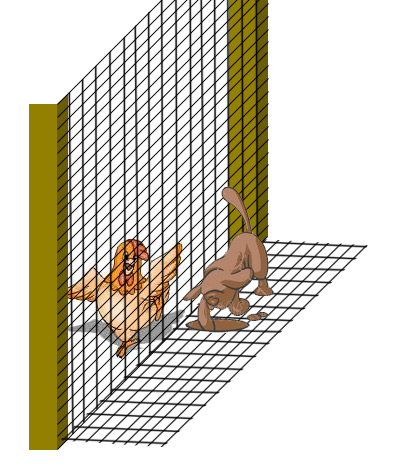
















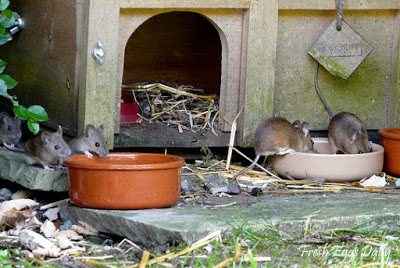 Nice clean bedding, safe at night from predators and also a ready food source, especially if you leave feed in the coop.
Nice clean bedding, safe at night from predators and also a ready food source, especially if you leave feed in the coop. Traps and poison can pose a health
hazard to your chickens as well as other animals, so instead I recommend
these five easy, precautionary measures to keep rodents out of your
coop:
Traps and poison can pose a health
hazard to your chickens as well as other animals, so instead I recommend
these five easy, precautionary measures to keep rodents out of your
coop:

